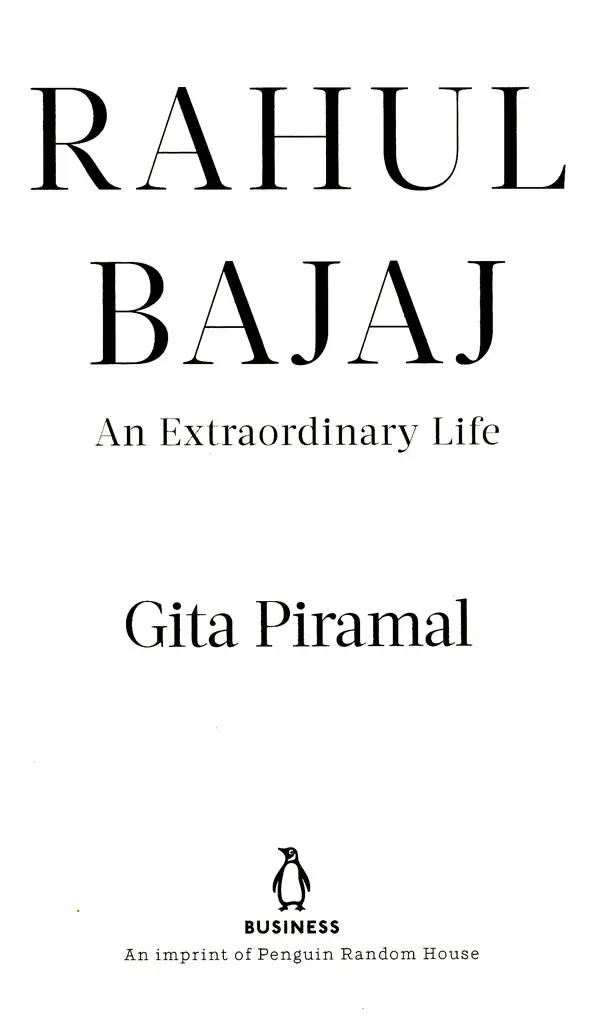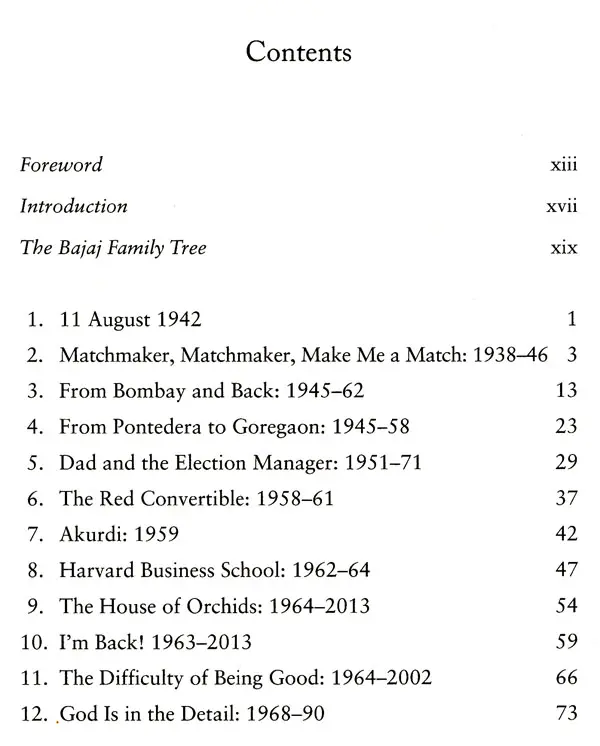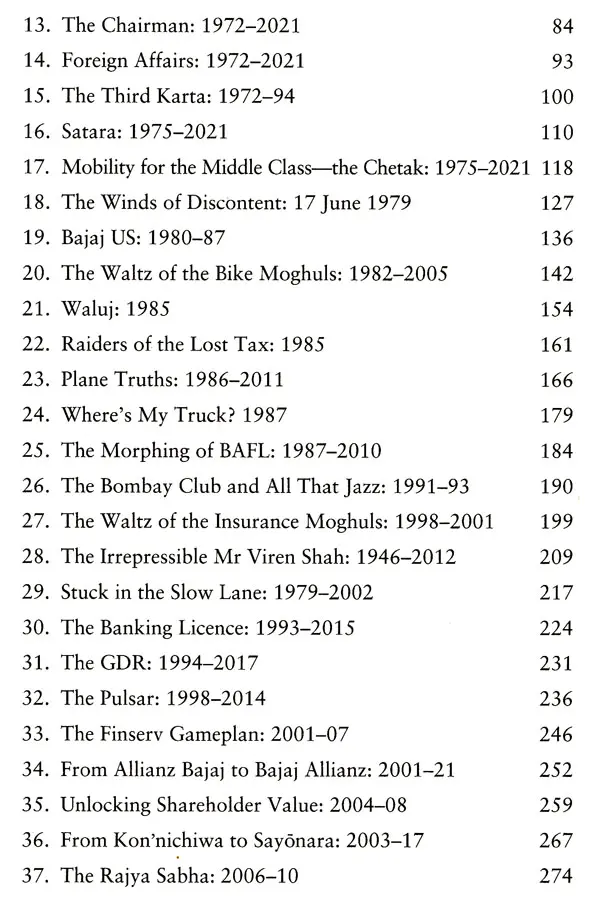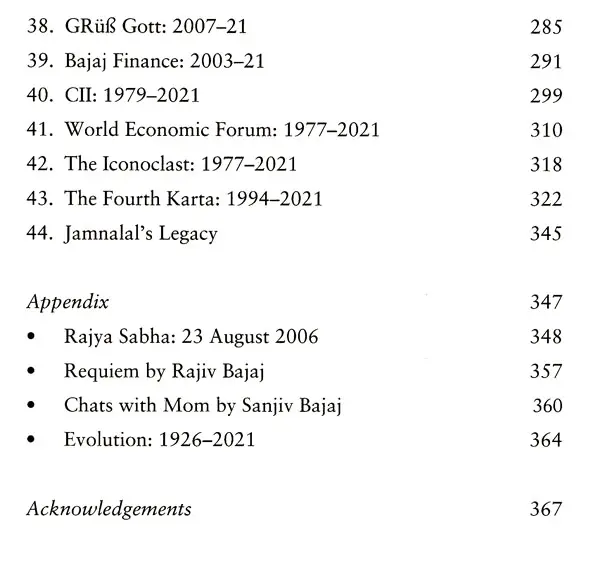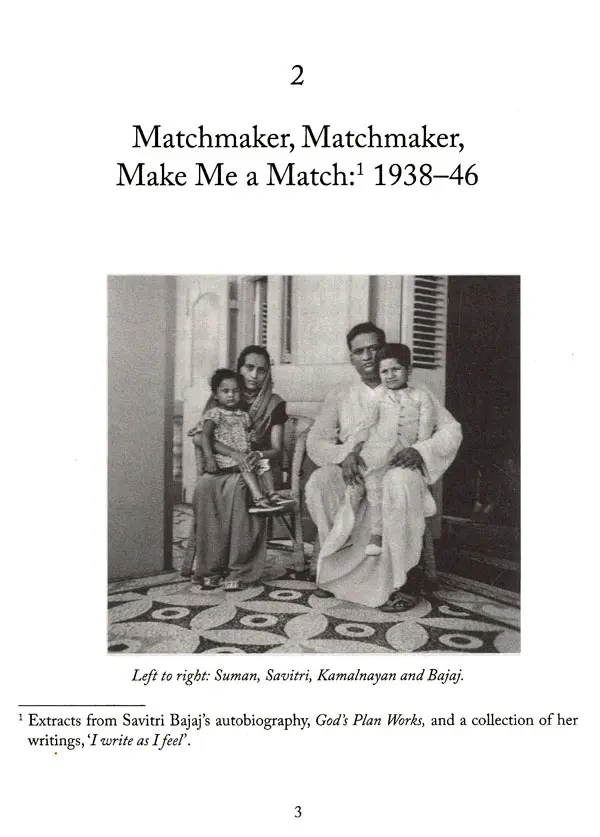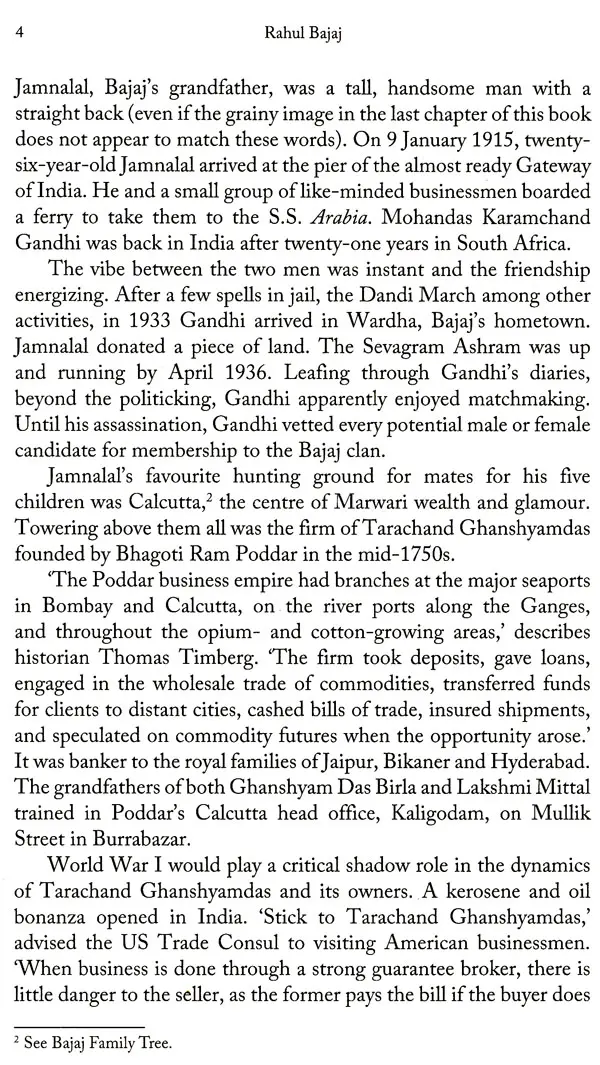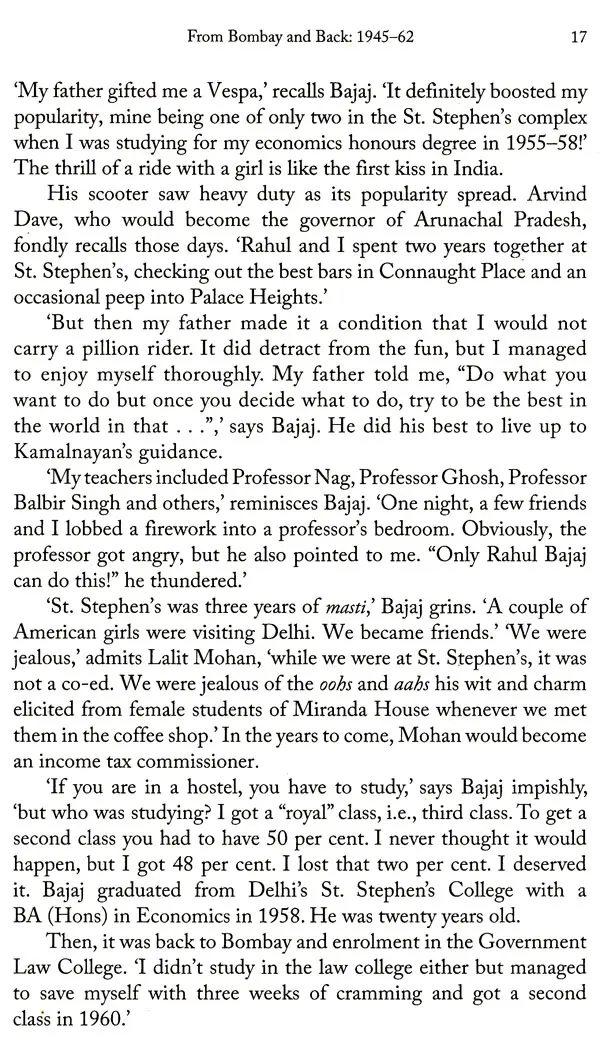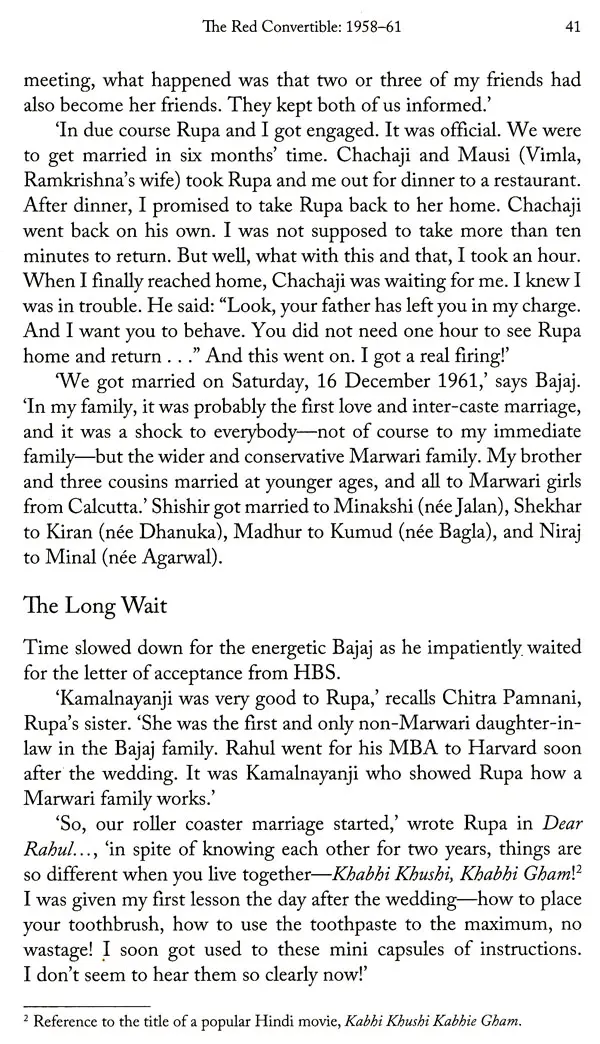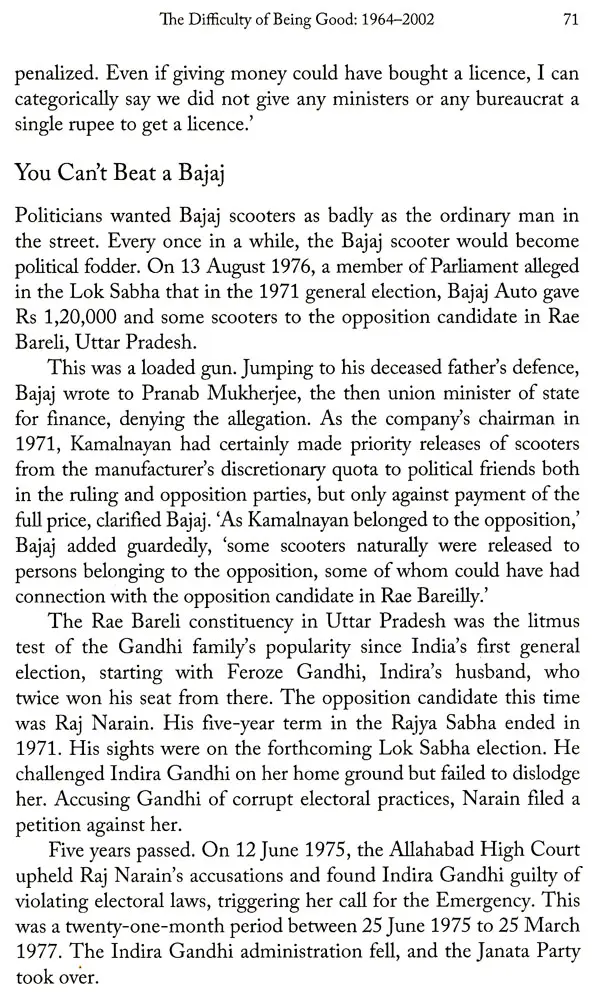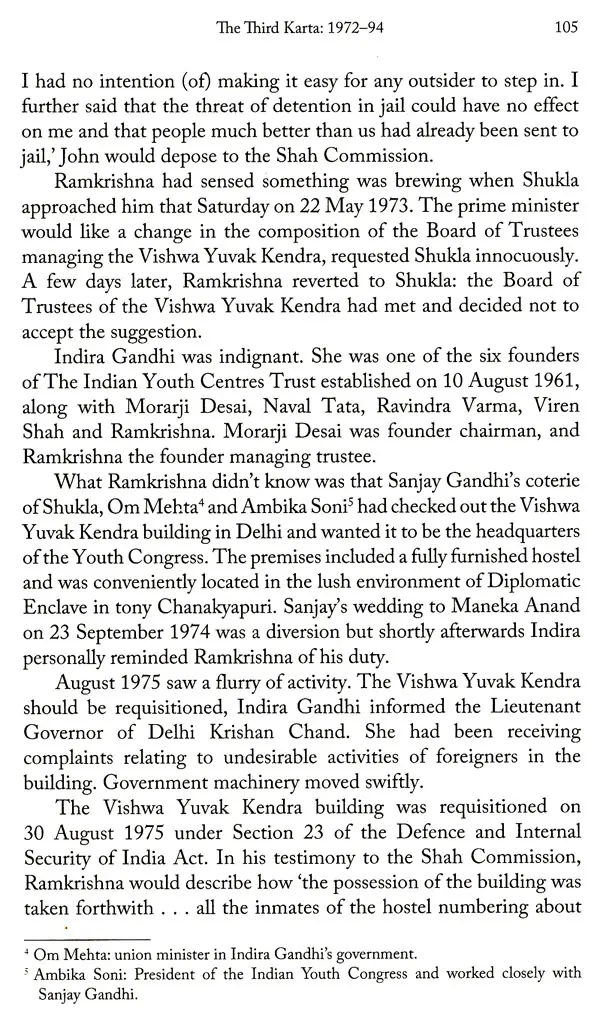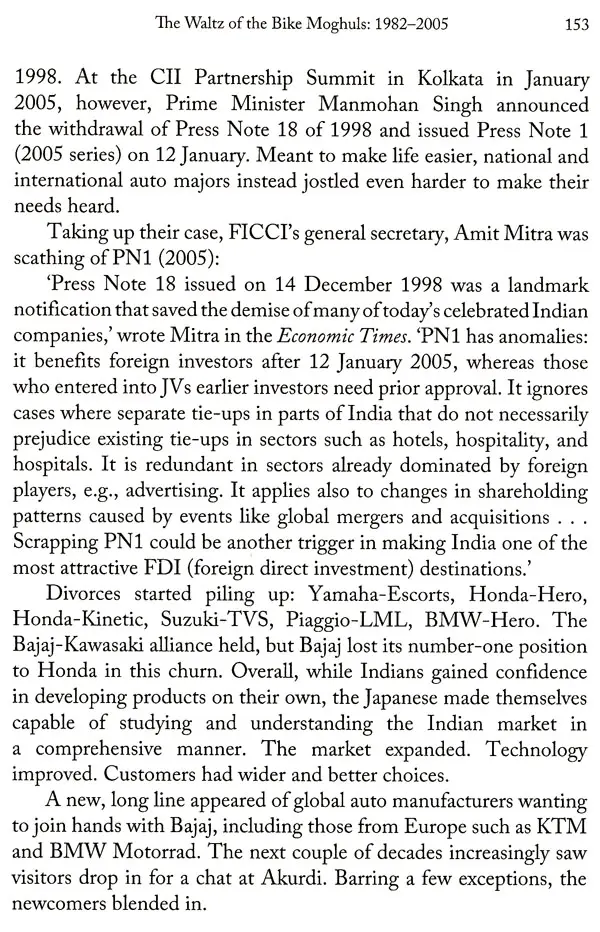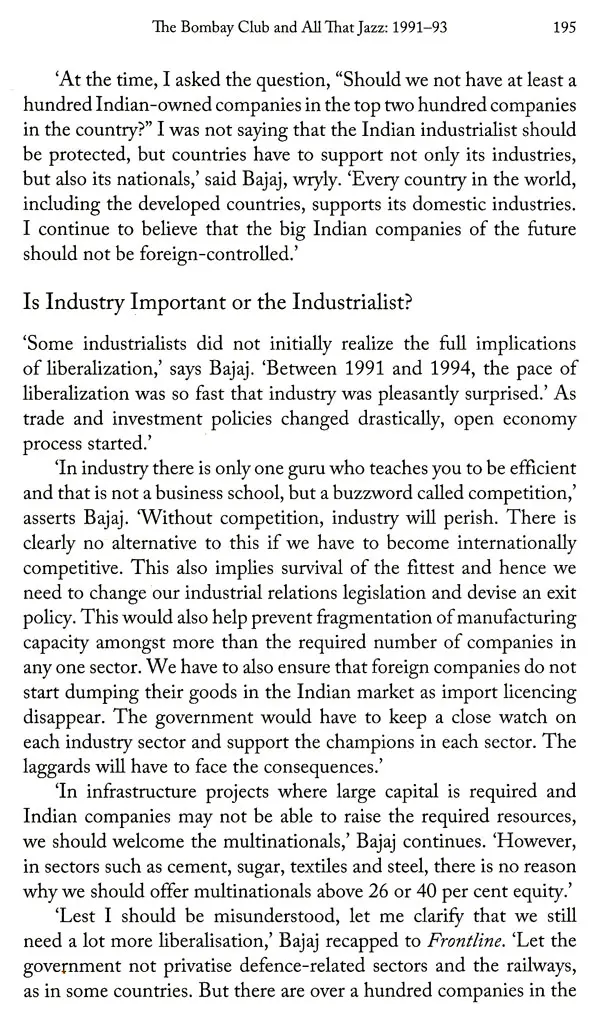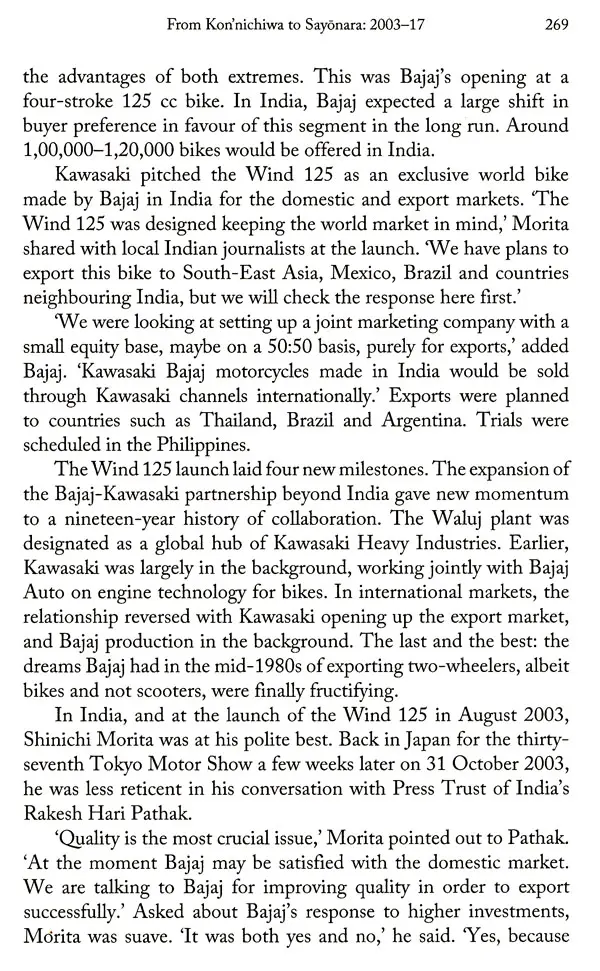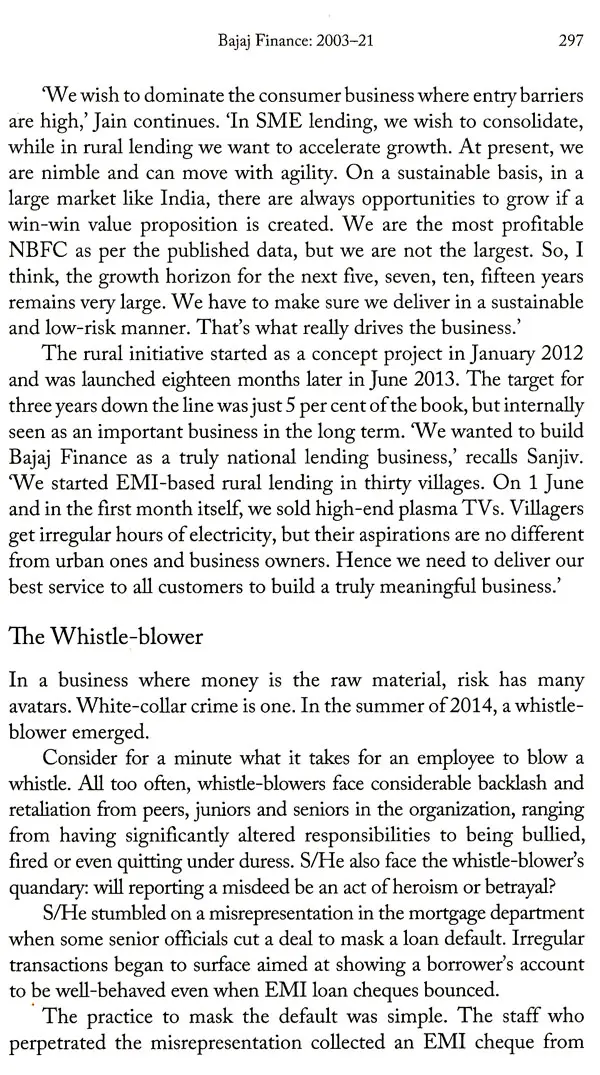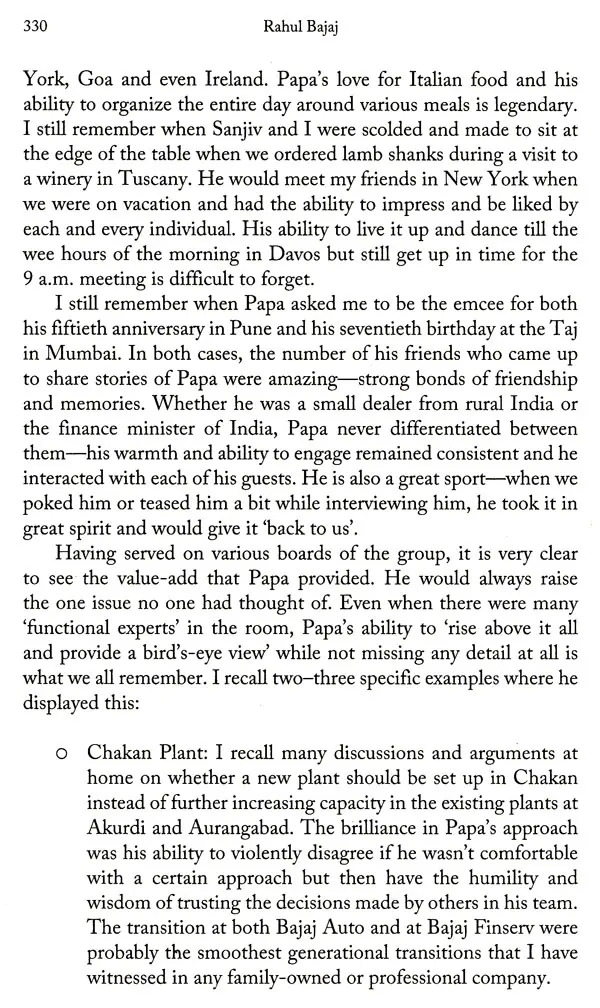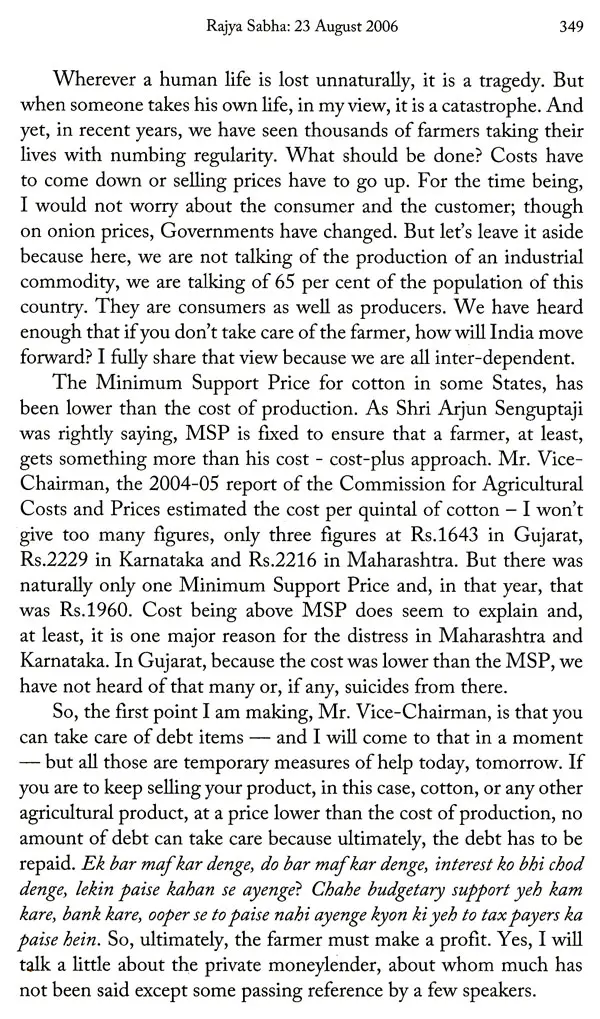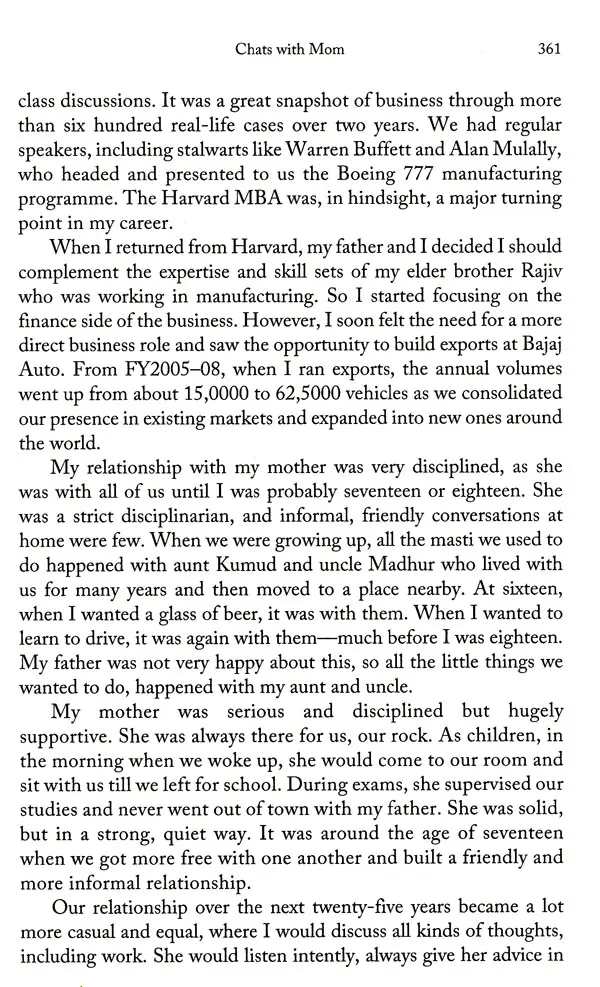
Rahul Bajaj: An Extraordinary Life
Book Specification
| Item Code: | UAO712 |
| Author: | Gita Piramal |
| Publisher: | Penguin Random House India Pvt. Ltd. |
| Language: | English |
| Edition: | 2022 |
| ISBN: | 9780670091713 |
| Pages: | 389 |
| Cover: | PAPERBACK |
| Other Details | 9.50 X 6.50 inch |
| Weight | 630 gm |
Book Description
RAHUL BAJAJ
Bold, charismatic and ethical, Rahul Bajaj built Bajaj Auto, one of the most valuable two-wheeler companies in the world, and Bojoj Finserv, a financial services powerhouse. He sogaciously led one of the most influential and successful business groups in India. A celebrated business leader, former parliamentarian and an influential national icon, he symbolizes the coming of age of free India.
In this book, bestselling author Gita Piramal provides unguarded access to Bojoj and his eventful and tumultuous life. The narrative begins with an account of his mother's imprisonment during India's freedom struggle and provides glimpses of life in an aspiring, post-liberalization country.
In the age of start-ups, Piramal deftly paints the portrait of a lasting legacy of the man behind 'Hamara Bajaj. Rich in astute observations and deep insights, the biography is also peppered with incomparable lessons about family, business and public life, and about ultimately leaving an indelible mark on the fabric of society.
Piramal is a senior associate fellow at Somerville College, University of Oxford, and holds a BA and MA in history and a PhD in business history, all from Bombay University.
Indian business leaders, Rahul had an exceptional upbringing which probably shaped his outlook on life, business and family alike. His grandfather, Jamnalal Bajaj, was among Gandhi's earliest colleagues and friends after his return from South Africa; his father, Kamalnayan Bajaj, followed suit and lived in the Wardha Ashram in Maharashtra through much of his life, and his mother, Savitri, was active in the freedom struggle, including the suffering of jail terms. Consequently, Rahul grew up in a traditional Marwari business family but imbued with the Gandhian ethics of truth, austerity, honesty, kindness and respect for others along with an overall sense of duty, which he has endeavoured to transmit to his children. As one goes through this volume, one begins to understand Rahul's evolution as a person, ethical business leader, son, father and patriarch. He has always spoken truth to power regardless of the regime in power and exhibited his independence despite intolerable business and personal pressures at different times. When he agreed to be a member of Parliament, he insisted on standing as an independent candidate rather than joining any particular political party.
Through his sagacious leadership during the licence-permit raj he built Bajaj Auto brick by brick into the two-wheeler leader that it became. He, of course, benefited greatly, like others, from the command-and-control regime where he could dominate a limited market through the production of the limited number of scooters that he was allowed, without any innovation throughout the period. But Vespa became the most loved Indian brand: a symbol of the Indian middle class arriving at the market. Although he was the leader of the so-called Bombay Club protesting the 1991 major economic reforms, unlike some of his colleagues, he benefited greatly from these reforms and took his company to greater heights taking advantage of all the new opportunities presenting themselves with the opening of the country's domestic markets and competition. He has been among the foremost Indian business leaders who promoted India internationally, particularly through his participation and leadership of the World Economic Forum in Davos and promotion of the annual India economic summits. In fact, I first met him at the 1990 Davos meeting, which began a lifelong professional friendship ever since.
I believe Rahul's life story can inspire different generations of readers, whether a young MBA student, a seasoned entrepreneur, a mid-career professional or simply someone who would like to know this fascinating person a bit better. So I would like to invite you, my dear reader, to look at his journey through three key prisms.
First, the lens of leadership. To my mind, Rahul exemplifies leadership as it is taught in business school, yet is often so elusive in the actual corporate world itself. He is a visionary and clear on strategy, is decisive, action-oriented and execution-driven, and excellent with people and in building teams. What makes him distinctive are his convictions, and his ability to speak out and to defend his beliefs. Ultimately, this is the true hallmark of leadership. Second, his journey captures the intricate and inseparable relationship between business, government and society. Over a period of more than six decades, he symbolizes the evolution of this relationship in India. This book is as much a story of the Baja Group of companies, as it is a tale of Indian industry, government and society relationships during these years. Historians, 1 think, will find this book helpful. But lessons from history apply to all of us. Given that we live in a world where environmental, social and governance concerns are increasingly important to investory and other stakeholders, I hope that these lessons will resonate with readers from a diverse range of backgrounds.
Finally, the prism of sustainability and the value of leaving a lasting legacy. Many young entrepreneurs today are motivated by billion-dollar valuations and relatively quick exits. That is certainly a tempting path. Yet Rahul's journey is testimony to a life of perseverance and purpose, towards value creation with a horizon that spans multiple generations. If you, dear reader, want to examine your life, your career or your business with a long-term perspective, I believe there is no better place to start than right here.
A word on nomenclature: Throughout the book, Rahul Bajaj is simply referred to as 'Bajaj', whereas all other Bajaj family members are referred to by their first name. I would also like to say a word on the book's structure. Each chapter in this book describes an important event in Rahul's life. In order to explain the event in its entirety, the chapters occasionally overlap in time and hence the book is not written in a traditional, linear chronology. Instead, each chapter can be read on its own as a vignette. All chapters collectively serve as a comprehensive account of his history.
**Contents and Sample Pages**
